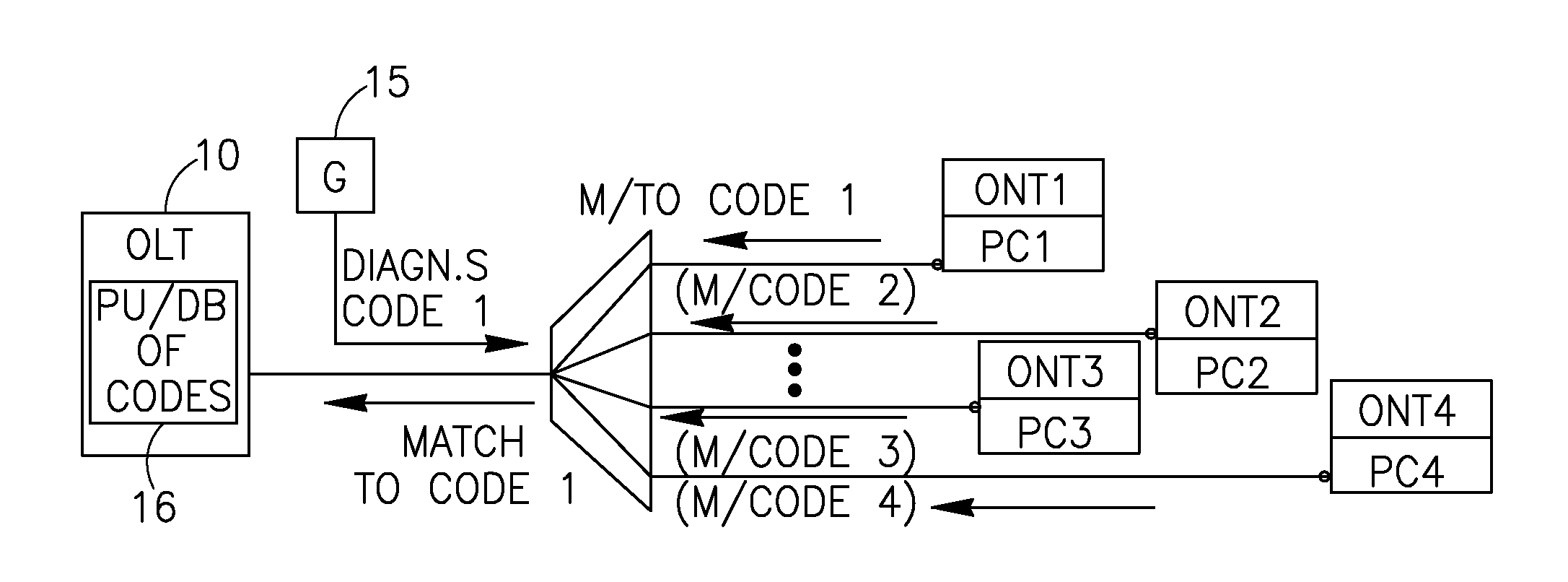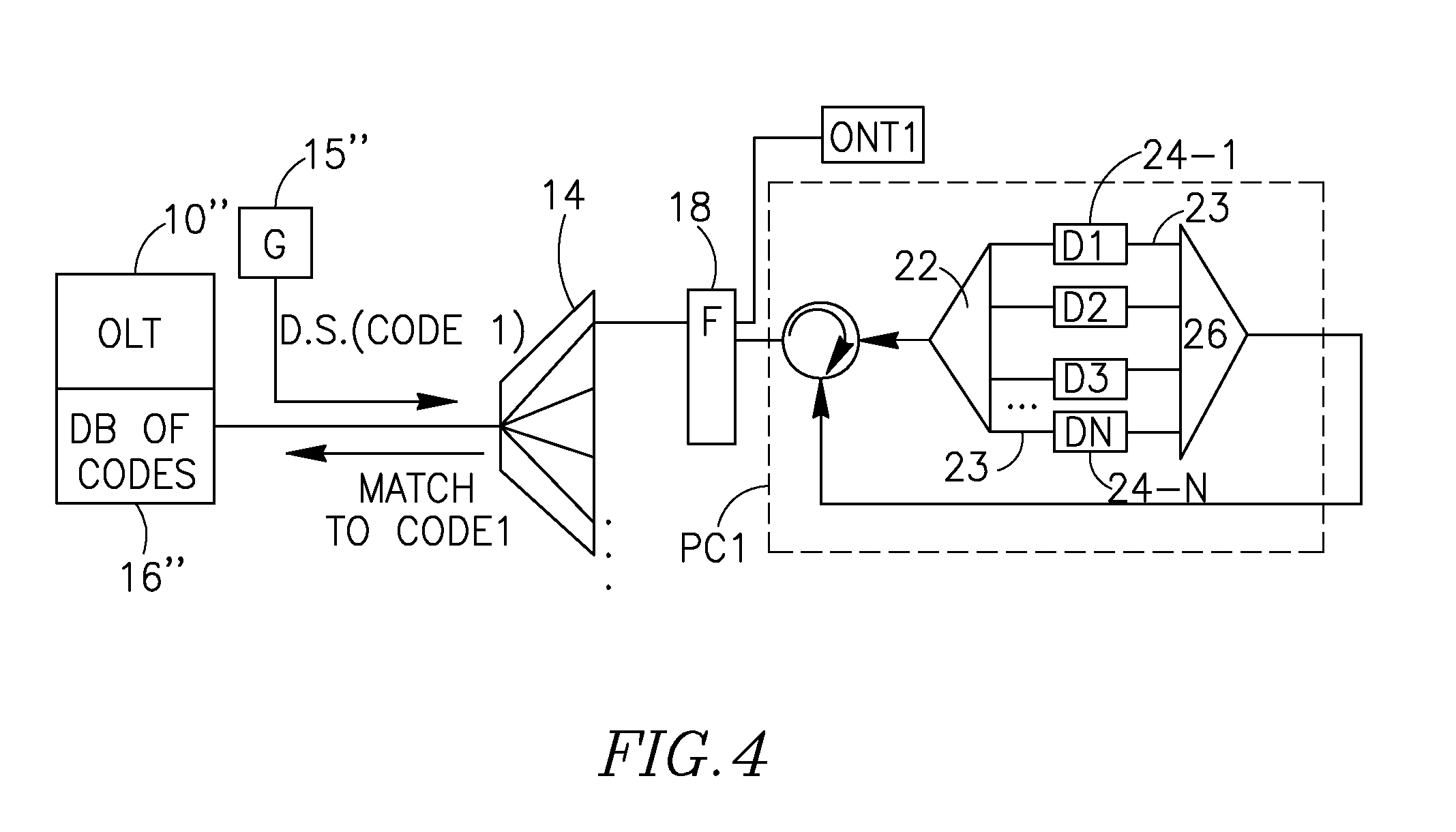Technology for fault allocation in passive optical networks (PON)
a technology of fault allocation and optical network, applied in the field of fault allocation in passive optical network, can solve the problems of difficult detection and sorting of optical signals received from onts, olt will be unable to recognize why the onts have stopped responding/transmitting, and the fault allocation in pon, so as to achieve simple, passive and cost-effective
- Summary
- Abstract
- Description
- Claims
- Application Information
AI Technical Summary
Benefits of technology
Problems solved by technology
Method used
Image
Examples
Embodiment Construction
[0036]The invention will be further described with reference to the following non-limiting examples, in which:
[0037]FIG. 1 (prior art) illustrates an example of a conventional diagnostic technique in a PON network.
[0038]FIG. 2 schematically shows one example of the proposed arrangement of a system with diagnostic points in the PON network, provided with the proposed passive diagnostic tools.
[0039]FIG. 3 schematically shows another example of the proposed arrangement of a system with diagnostic points in the PON network, provided with the passive diagnostic tools being pattern / image reflecting pixel-based optical devices.
[0040]FIG. 4 schematically illustrates one example of the proposed optical correlator, built using optical delay elements.
DETAILED DESCRIPTION OF THE INVENTION
[0041]FIG. 1 shows a PON network with its OLT 10 incorporating an OTDR unit 12. The OTDR unit, via a splitter 14, transmits an optical diagnostic / probe signal towards a group of ONTs of the PON. The splitter (a...
PUM
 Login to View More
Login to View More Abstract
Description
Claims
Application Information
 Login to View More
Login to View More - R&D
- Intellectual Property
- Life Sciences
- Materials
- Tech Scout
- Unparalleled Data Quality
- Higher Quality Content
- 60% Fewer Hallucinations
Browse by: Latest US Patents, China's latest patents, Technical Efficacy Thesaurus, Application Domain, Technology Topic, Popular Technical Reports.
© 2025 PatSnap. All rights reserved.Legal|Privacy policy|Modern Slavery Act Transparency Statement|Sitemap|About US| Contact US: help@patsnap.com



